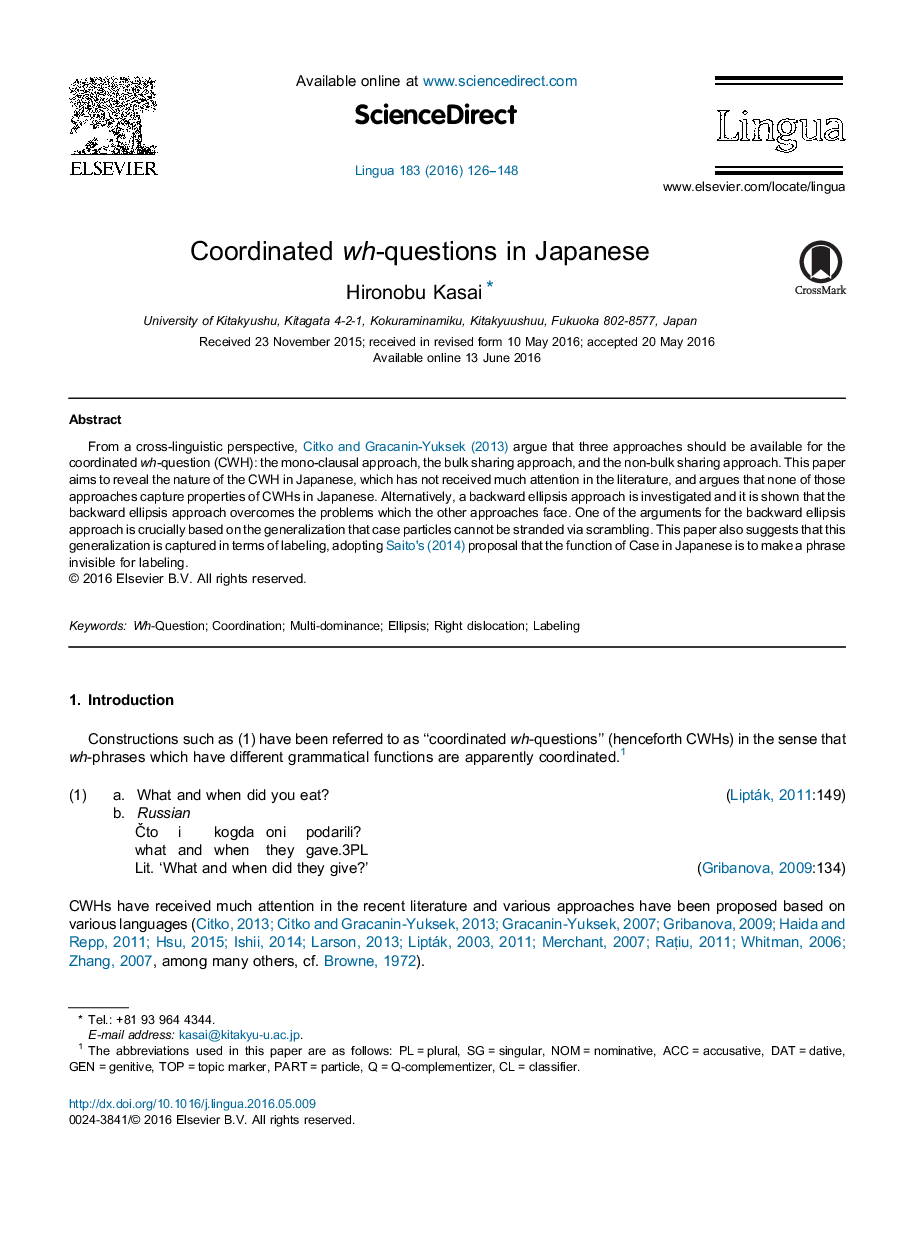| Article ID | Journal | Published Year | Pages | File Type |
|---|---|---|---|---|
| 5043075 | Lingua | 2016 | 23 Pages |
â¢Coordinated wh-questions in Japanese involve backward ellipsis.â¢The ban on case-particle stranding cannot be repaired via ellipsis.â¢Stranding of a case-particle via scrambling creates an unlabeled structure.
From a cross-linguistic perspective, Citko and Gracanin-Yuksek (2013) argue that three approaches should be available for the coordinated wh-question (CWH): the mono-clausal approach, the bulk sharing approach, and the non-bulk sharing approach. This paper aims to reveal the nature of the CWH in Japanese, which has not received much attention in the literature, and argues that none of those approaches capture properties of CWHs in Japanese. Alternatively, a backward ellipsis approach is investigated and it is shown that the backward ellipsis approach overcomes the problems which the other approaches face. One of the arguments for the backward ellipsis approach is crucially based on the generalization that case particles cannot be stranded via scrambling. This paper also suggests that this generalization is captured in terms of labeling, adopting Saito's (2014) proposal that the function of Case in Japanese is to make a phrase invisible for labeling.
